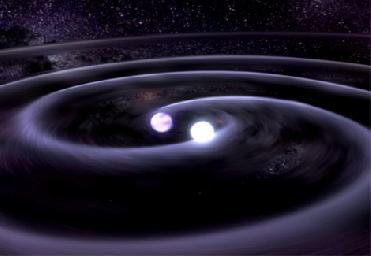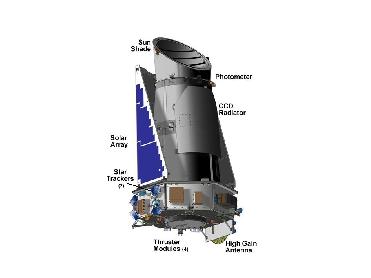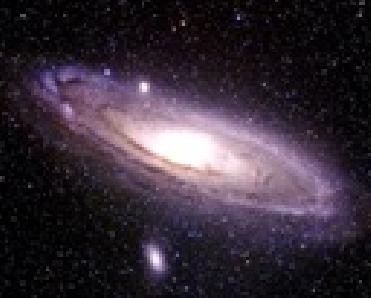
About 1,600 light-years away, two dense white dwarfs in the J0806 binary star system orbit each other once every 321 seconds. Image Credit: NASA
A white dwarf, also called a degenerate dwarf, is a small star composed mostly of electron-degenerate matter. Because a white dwarf's mass is comparable to that of the Sun and its volume to that of the Earth, it is very dense. Its faint luminosity comes from the emission of stored thermal energy.
White dwarfs comprise roughly 6 percent of all known stars in the solar neighborhood. White dwarfs are thought to be the final evolutionary state of all stars whose mass is not too high – over 97 percent of stars in our galaxy.
The unusual faintness of white dwarfs was first detected in 1910 by Henry Norris Russell, Edward Charles Pickering, and Williamina Fleming. The name white dwarf was coined by Willem Luyten.
After the hydrogen-fusing lifetime of a main-sequence star of low or medium mass ends, it expands to a red giant which fuses helium to carbon and oxygen in its core by the triple-alpha process. If a red giant has insufficient mass to generate the core temperatures required to fuse carbon, an inert mass of carbon and oxygen builds up at its centre. After shedding its outer layers to form a planetary nebula, it leaves behind this core which forms the remnant white dwarf.
Therefore, white dwarfs are usually composed of carbon and oxygen. It is also possible that core temperatures suffice to fuse carbon but not neon, in which case an oxygen-neon-magnesium white dwarf may be formed. Also, some helium white dwarfs appear to have been formed by mass loss in binary systems.
The material in a white dwarf no longer undergoes fusion reactions, so the star has no source of energy, nor is it supported against gravitational collapse by the heat generated by fusion. It is supported only by electron degeneracy pressure, causing it to be extremely dense.
A carbon-oxygen white dwarf that approaches this mass limit, typically by mass transfer from a companion star, may explode as a Type Ia supernova via a process known as carbon detonation.
A white dwarf is very hot when it is formed but since it has no source of energy, it gradually radiates away its energy and cools down. This means its radiation, which initially has a high colour temperature, reduces with time. Over a very long time, a white dwarf cools to temperatures at which it is no longer be visible, and becomes a cold black dwarf.
However, since no white dwarf can be older than the age of the Universe (approximately 13.7 billion years), even the oldest white dwarfs still radiate at temperatures of a few thousand kelvins, and no black dwarfs are thought to exist yet. -- Courtesy: Wikipedia
 Previous Article
Previous Article Next Article
Next Article













The Indian Air Force, in its flight trials evaluation report submitted before the Defence Ministry l..
view articleAn insight into the Medium Multi-Role Combat Aircraft competition...
view articleSky enthusiasts can now spot the International Space Station (ISS) commanded by Indian-American astr..
view article